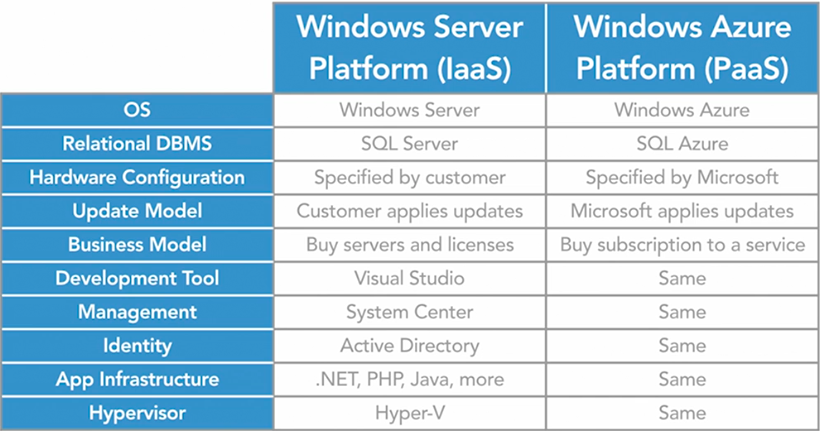The “CLOUD” once meant something available over an internet connection. These days, the cloud is a new way of thinking about system architecture. The definition of the cloud is refined regularly and there is an enormous amount of thought spent on cloud patterns, the best ways to build distributed systems across multiple data centers and resources.
The cloud is a new way of thinking about
- 1. A massive scale of servers
- 2. Enormous network bandwidth
- 3. Buying and selling hardware and software

Cloud services can be categorized as
| SaaS | PaaS | IaaS |
| Software as a Service | Platform as a Service | Infrastructure as a Service |
| Users subscribe to the software and only pay for what is used (eg. monthly subscription). | Allows customers to instantly provision servers, network, switches, firewalls and other physical devices. | Includes infrastructure (servers, storage & networking), however these components are configured and managed by the PaaS provider. |
| Allows users to connect to and use cloud-based apps over the internet. | Ability to outsource your infrastructure to the cloud. | Can also include middleware, development tools, business intelligence services and database systems. |
| Applications are run through the browser and do not require any downloads or installations on the client side. | Each resource is offered as a separate service component. | Designed to support the complete web application lifecycle (building, testing, deploying, managing and updating). |
| Applications can have native clients too that will sync with the cloud (eg. One Drive). | Cloud providers manage the servers, hard drives, networking, virtualization and storage. | |
| Vendors manage all the potential technical issues such as data and servers. | Infrastructure is provisioned and managed over the internet. | |
| Hardware and software updates are automatic. | ||
| Cross-device compatibility. | ||
| Applications are accessible from any location. |

NIST defines 5 essential characteristics of the cloud:
- On-demand self-service
- Broad network access
- Resource pooling
- Rapid elasticity
- Measured service
Deployment models available from cloud providers include:
- Private
- Public
- Hybrid
Benefits of using the cloud
- Reduces the cost of managing a data center
- Pay for the services used with no long-term contracts
- Automatic software or infrastructure updates
- 99.9% availability agreements
- Professional troubleshooting
- Dynamic scalability
- Dynamic elasticity
- Global datacenters in various regions

